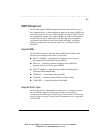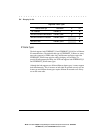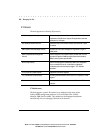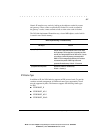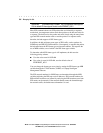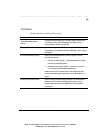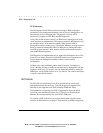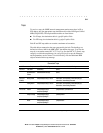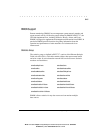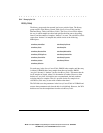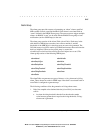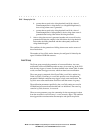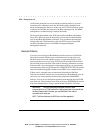
. . . . . . . . . . . . . . . . . . . . . . . . . . . . .
5-11
Compaq Netelligent 2724/2824 Dual-Speed Hub User Guide
Writer:
Chris Seiter
Project:
Compaq Netelligent 2724/2824 Dual-Speed Hub User Guide
Comments:
ile Name:
2824_5.DOC
Last Saved On:
06/25/97 5:32 PM
Traps
To receive a trap, the SNMP network management station must place its IP or
IPX address into the appropriate trap destination table of the Netelligent Unified
MIB (CPQNUNIF). The trap destination tables are listed below:
■
For IP traps, the destination table is cpqnIpTrapDestTable
■
For IPX traps, the destination table is cpqnIpxTrapDestTable
Each IP and IPX trap tables can contain a maximum of ten entries.
The table below summarizes the traps generated by the hub. The headings are
defined as follows: MIB is the MIB or RFC that defines the traps. Trap lists the
traps by a convenient name. RFC1157 Trap Type lists the RFC1157 generic trap
category to which the trap belongs; for enterpriseSpecific traps, the enterprise
and trap numbers are also shown. Variable Bindings lists the additional MIB
objects included in the trap message.
Generated Traps
MIB Trap RFC1157 Trap Type Variable Bindings
RFC1157 Cold Start
coldStart
(1) (none)
Authentication
Failure
authenticationFailure
(4) (none)
RFC1757
(RMON)
Rising Alarm
enterpriseSpecific
(6):
rmon
.1
alarmIndex, alarmVariable, alarmSampleType,
alarmValue, alarmRisingThreshold
Falling Alarm
enterpriseSpecific
(6):
rmon
.2
alarmIndex, alarmVariable, alarmSampleType,
alarmValue, alarmFallingThreshold
RFC1516** Health
enterpriseSpecific
(6):
snmpDot3RptrMgt
.1
rptrOperStatus, rptrHealthText
Group Change
enterpriseSpecific
(6):
snmpDot3RptrMgt
.2
rptrGroupIndex
Reset
enterpriseSpecific
(6):
snmpDot3RptrMgt
.3
rptrOperStatus



